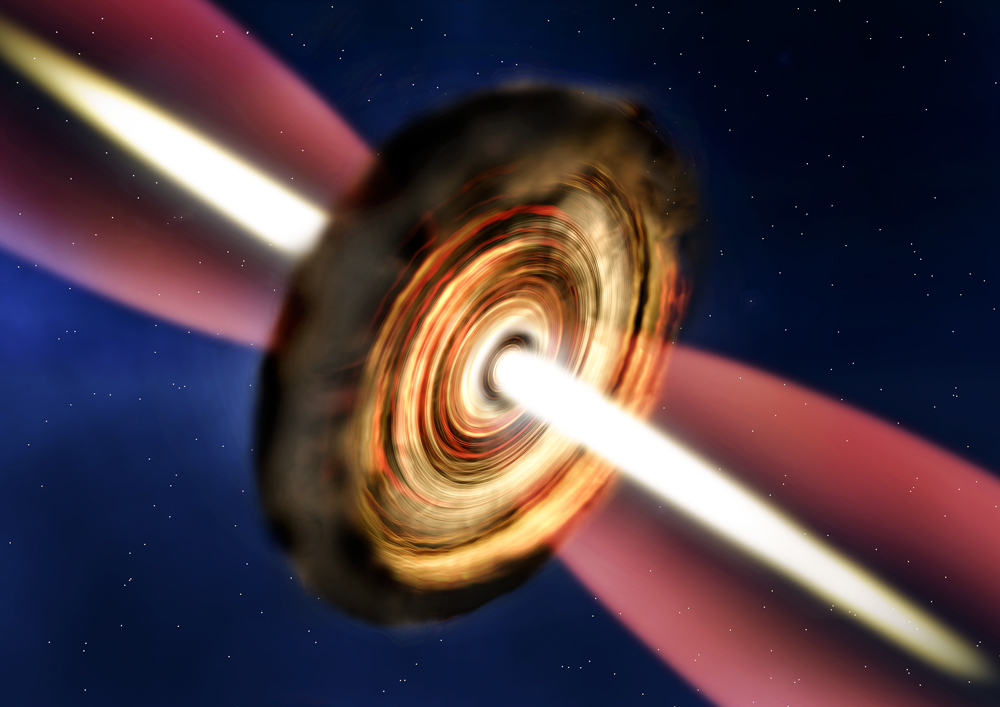Big Kid: Massive Star Spotted Early in Life

Astronomers have caught a rare glimpse of an extremely massive star in the early stages of its life, gaining new insight into the way large stellar bodies like this form and evolve.
The star, located almost 11,000 light-years from Earth, has a mass 30 times that of the sun, and it's still growing. Astronomers found that this star is still in the process of collecting material from its parent cloud of gas and dust, which means it is only a baby in cosmic terms and is expected to be even more massive by the time it grows up, according to a statement from the University of Cambridge, where the research was conducted. A young star such as this is also known as a protostar.
Due to their incredibly large size, protostars such as this are difficult to locate in Earth's galaxy (the Milky Way) and are hard to study because they live fast and die young and are generally very far away. [The Biggest Star Mysteries of All Time]
"An average star like our sun is formed over a few million years, whereas massive stars are formed orders of magnitude faster — around 100,000 years," John Ilee, lead author of the study from Cambridge's Institute of Astronomy, said in the statement. "These massive stars also burn through their fuel much more quickly, so they have shorter overall life spans, making them harder to catch when they are infants."
But the astronomers behind the new work were able to do just that: catch the star during a key stage of its birth. Their findings revealed that massive stellar bodies like this form from rotating discs of gas and dust, also known as the stars' parent clouds. This process is very similar to the way that much smaller stars like Earth's sun form, astronomers said in the statement.
Using the Submillimeter Array (SMA) in Hawaii and the Karl G. Jansky Very Large Array (VLA) in New Mexico, the astronomers found that the new protostar lives in an infrared dark cloud, which is an ideal region for star formation because it is very cold and dense.
With thick surrounding clouds of gas and dust, these areas are generally difficult to observe using telescopes. However, the astronomers were able to peer through the clouds and measure the radiation emitted from the dust around the star and its chemical signatures. Their findings revealed the presence of a "Keplerian" disc that's rotating more quickly at its center.
Get the Space.com Newsletter
Breaking space news, the latest updates on rocket launches, skywatching events and more!
"This type of rotation is also seen in the solar system — the inner planets rotate around the sun more quickly than the outer planets," Ilee explained. "It's exciting to find such a disc around a massive young star, because it suggests that massive stars form in a similar way to lower-mass stars, like our sun."
The new findings were published Aug. 9 in the Monthly Notices of the Royal Astronomical Society.
Follow Samantha Mathewson @Sam_Ashley13. Follow us @Spacedotcom, Facebook and Google+. Original article on Space.com.
Join our Space Forums to keep talking space on the latest missions, night sky and more! And if you have a news tip, correction or comment, let us know at: community@space.com.

Samantha Mathewson joined Space.com as an intern in the summer of 2016. She received a B.A. in Journalism and Environmental Science at the University of New Haven, in Connecticut. Previously, her work has been published in Nature World News. When not writing or reading about science, Samantha enjoys traveling to new places and taking photos! You can follow her on Twitter @Sam_Ashley13.









